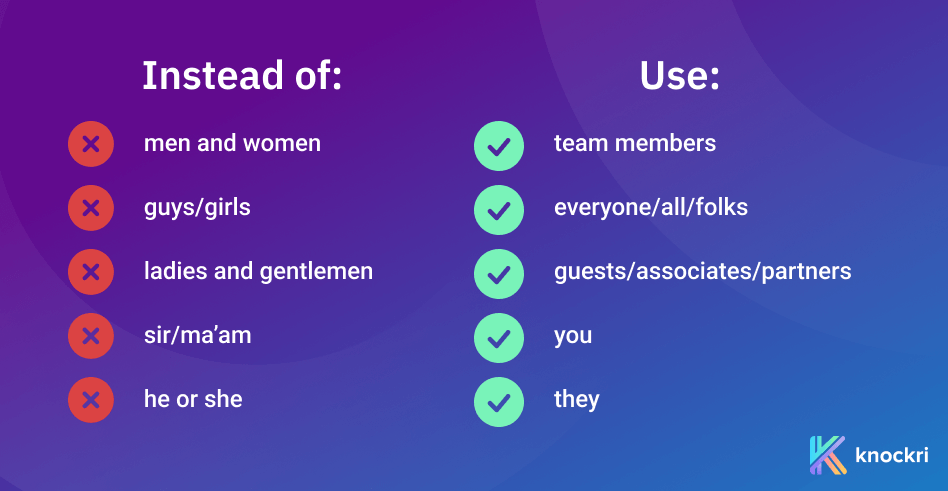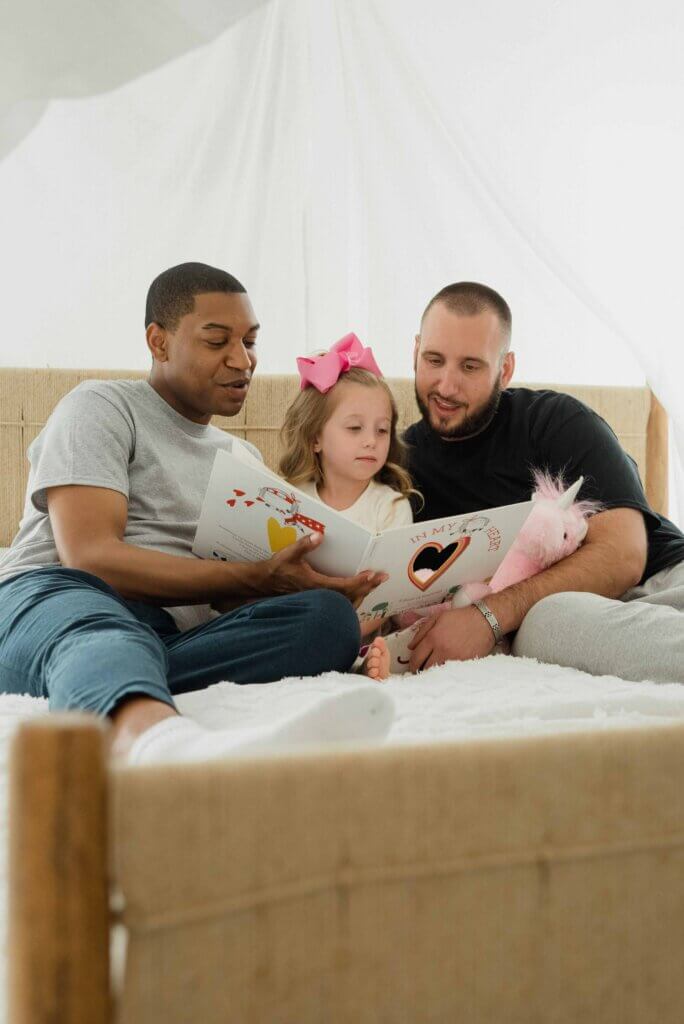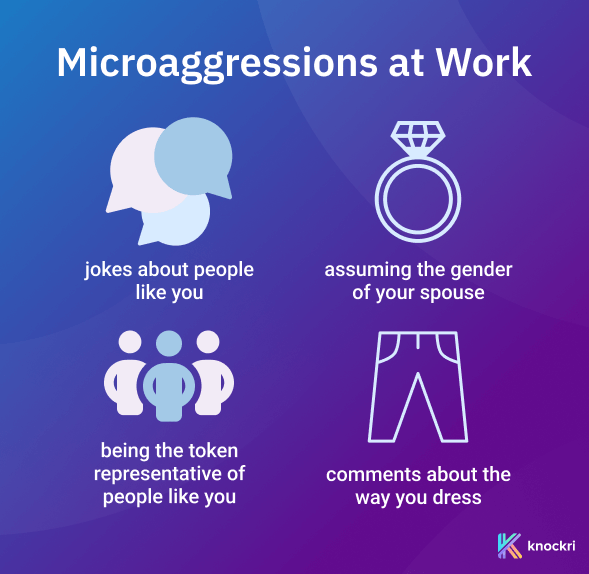LGBTQ employees experience unique challenges and barriers in the world of work. This group — which includes lesbian, gay, bisexual, transgender, queer, and many other identities — faces concerns about inclusion, representation, discrimination, harassment, and safety in everyday interactions in the workplace. These challenges affect individuals’ health and wellbeing, employee happiness and productivity, and even the company’s bottom line.
For instance, though being out about one’s sexuality or gender identity at work contributes to greater employee happiness and retention, nearly half of American LGBTQ employees are closeted at work. Another conflicting statistic: employees who are Gen Z or younger Millennials are more open about discussing LGBTQ topics, but junior employees are less likely to be out at work than more senior levels.
There is also an element of intersectionality at play. LGBTQ women are twice as likely to feel they can’t discuss themselves or their personal lives at work. LGBTQ Americans who are people of color experience greater discrimination than their white counterparts.
LGBTQ employees who feel accepted and safe in the workplace are happier and better able to do their best work. Feeling the need to “hide” their true selves at work is limiting and places stress on the employee. In contrast, feeling included reduces strains on mental health and improves wellbeing.
Hiring may be just one part of the employee lifecycle, but it’s also the first place potential employees have real interactions with your company. Applicants see signals of inclusion long before they reach the interview stage: the type of language used in job ads, visuals included on the website, and the options for listing their gender on an application.
Moreover, attracting, hiring, and retaining a diverse set of individuals is a key indicator of company culture and inclusivity.
The business case for LGBTQ inclusion
Being inclusive to LGBTQ employees, current and future, is the right thing to do. LGBTQ individuals are protected under the United Nations Universal Declaration of Human Rights. Thirty of the 50 US states prohibit discrimination against public employees based on sexual orientation, with 22 of those also prohibiting discrimination based on gender identity. Being inclusive is a basic tenet of respecting others and behaving ethically.
In case you needed some extra reasons, here are four statistics about LGBTQ inclusion boosting businesses:
- The US economy could save $9 billion annually if organizations were more effective in LGBTQ inclusion. This avoids costs from stress and poor health related to discrimination and being closeted at work. Inclusion also boosts customer loyalty and brings in revenue from the included demographic.
- Diverse organizations outperform less-diverse competitors in revenue, profits, and employee happiness.
- Employees who feel included are three times more likely to feel excitement for and commitment to their organizations. This improves employee retention and productivity.
- LGBTQ inclusion widens your talent pool — 70% of LGBTQ candidates would not apply to a company that doesn’t support LGBTQ employees. 46% of all candidates said the same.
Sources of exclusion in hiring and how to fix them
The hiring process is not inclusive by nature. From the wording of job descriptions to interviews riddled with microaggressions, becoming aware of the ways hiring is exclusive is the first step to addressing these issues and eliminating them.
Job Descriptions and Exclusive Language
The first place potential employees get a sense of your company’s level of inclusion is in the job description. Limiting pronouns to “he or she” — or worse, defaulting to “he” — excludes nonbinary applicants and those who may use neopronouns like ze/zir.
Using gender-neutral pronouns like they/them in job descriptions or writing descriptions to avoid using pronouns signals mindfulness of identities outside the gender binary and shows inclusion.
You can also check your job descriptions for implicit gender bias or gendered language using online tools like Gender Decoder. Being mindful of the words you use and how different gender identities receive them can widen your talent pool and signal the inclusive culture of your company.

Unconscious Bias
Unfortunately, unconscious bias is common in many human interactions, including resume screening and job interviews. Unconscious and implicit bias is not always based on race, sexuality, or gender presentation — it can occur based on the education an applicant has or hasn’t received or the clothing they are wearing.
Mitigating unconscious bias is a twofold process involving educating your employees and auditing your hiring and interview process. Unconscious bias training should be mandatory for all employees, including leadership and those outside the Human Resources Department. Go further and provide training on LGBTQ terminology, inclusive conduct, allyship, and reporting discrimination.
You should also evaluate your hiring process as a whole to determine pitfalls. Is there one point at which LGBTQ applicants, women, or BIPOC drop off? Is your hiring panel diverse? Are you using an evaluation method that actively reduces bias and equitably screens candidates?
Knockri’s automated video interview assessment tool evaluates candidates based on skills and behaviors predictive of performance on the job. How applicants look, speak, and sound does not factor into scoring, and assessments are inclusive by design. Book a demo to chat with our HR Solutions Consultant about improving inclusion from the beginning of your hiring process.
Lack of Representation
We’ve already mentioned the signals applicants are sent about your company’s inclusion — or lack thereof — before they even hit the interview stage of the hiring process. Having a diverse group of people as part of the hiring or outreach team signals that the company is welcoming to all.
Even simpler, consider the images used on your website and marketing materials. Does every person look the same and belong to the same demographic? Or is there variety so employees can see themselves working at your company? Do you highlight existing LGBTQ employees as role models and signs of success?
Even smaller signs of allyship and inclusion can be meaningful, such as including employee pronouns in email signatures and LinkedIn profiles to normalize and encourage pronoun-sharing and avoid misgendering.
Policies and Transparency
A baseline for inclusion is in company policy. Highlight and emphasize your company’s commitment to anti-discrimination, anti-bullying, and anti-harassment in policies. Ensure that LGBTQ individuals are explicitly included. More importantly, follow through on policy by ensuring that discrimination, harassment, and bullying have no place in the hiring process.

Don’t shy away from listing these commitments in job descriptions. Include a paragraph welcoming LGBTQ candidates, BIPOC applicants, women, and disabled individuals to apply.
Remember that there may be other policies that are not inclusive of LGBTQ employees. For example, maternity and paternity leave can be replaced by parental leave and should also apply to individuals adopting or having children via surrogacy.
Microaggressions
While 84% of all employees experience microaggressions, this number is higher for LGBTQ employees. Microaggressions are everyday slights rooted in bias and include making assumptions about someone based on your personal experiences or your perceptions of the group they belong to.
Microaggressions appear every day in the workplace, including during the hiring process. They include misgendering an applicant, assuming the gender of their spouse based on seeing a wedding ring, and commenting about how they dress.
Microaggressions can be highly uncomfortable and triggering, so they should be avoided, even when as a “joke.” Educate interviewers and hiring managers about microaggressions and how harmful they can be. Not only can they cause promising candidates to drop out of the hiring process, but they can also damage the individual.

How to make your hiring process more inclusive
Implementing diversity, equity, and inclusion strategies at your company is essential for innovation, employee happiness and well-being, and business longevity. It’s important to remember that there are as many ways to be diverse, equitable, and inclusive as there are groups affected by a lack of DEI in the workplace.
LGBTQ inclusion is a topic too broad to cover in a single article. Here is a review of actionable steps to jumpstart inclusion in your hiring process today.
- review posted job descriptions, the company website, and social media pages for gendered language and pronouns
- add inclusion statements to job descriptions
- ask employees to include their pronouns in email signatures and LinkedIn profiles
- review your hiring process as a whole to root out sources of bias and discover where LGBTQ candidates may be dropping off
- implement mandatory training on topics such as unconscious bias, microaggressions, LGBTQ terminology, inclusion, allyship, and reporting discrimination
- check that the visuals on your website and marketing materials represent the world around you
- explicitly include LGBTQ individuals in company policies about anti-harassment, anti-discrimination, and anti-bullying



